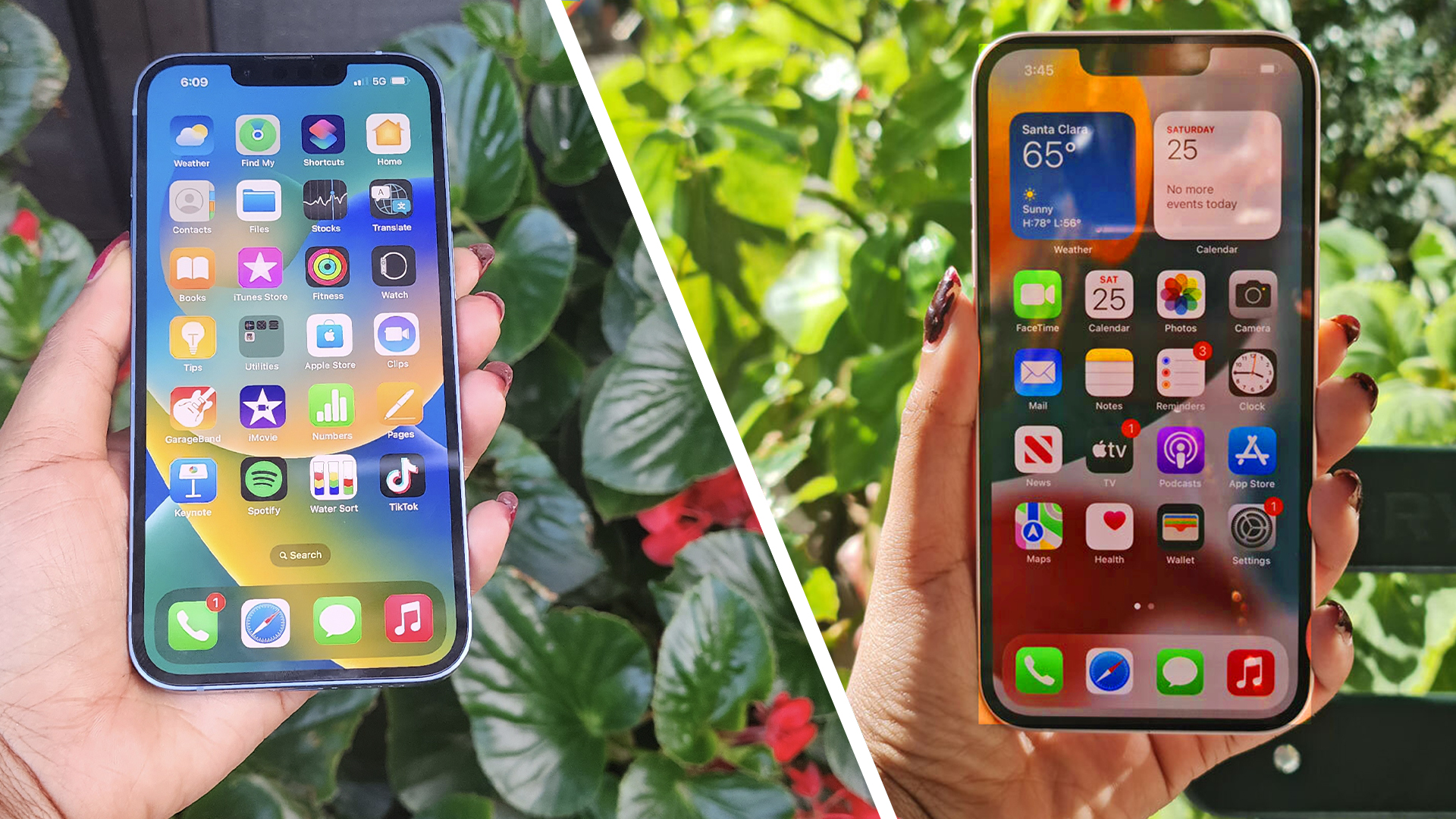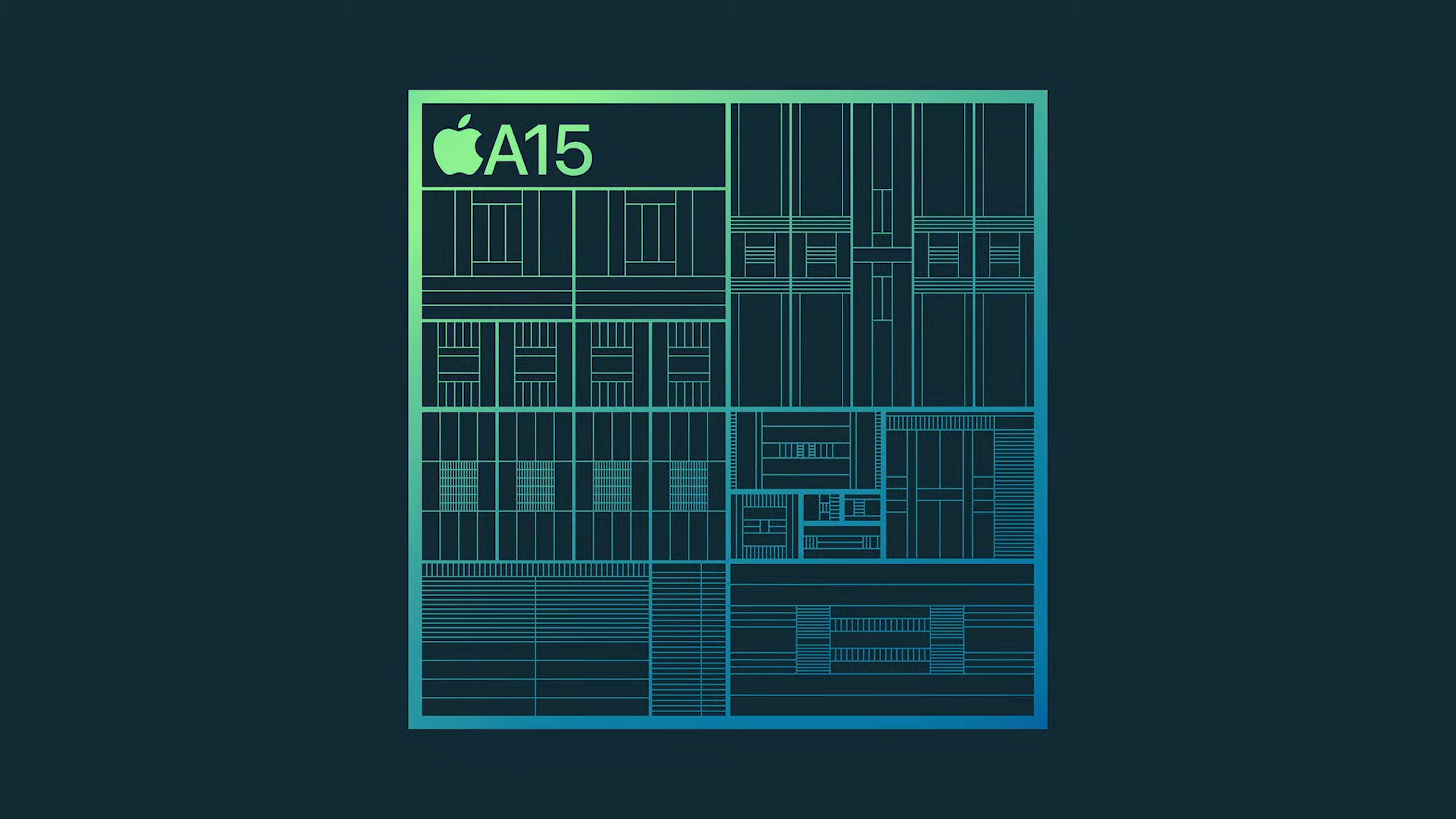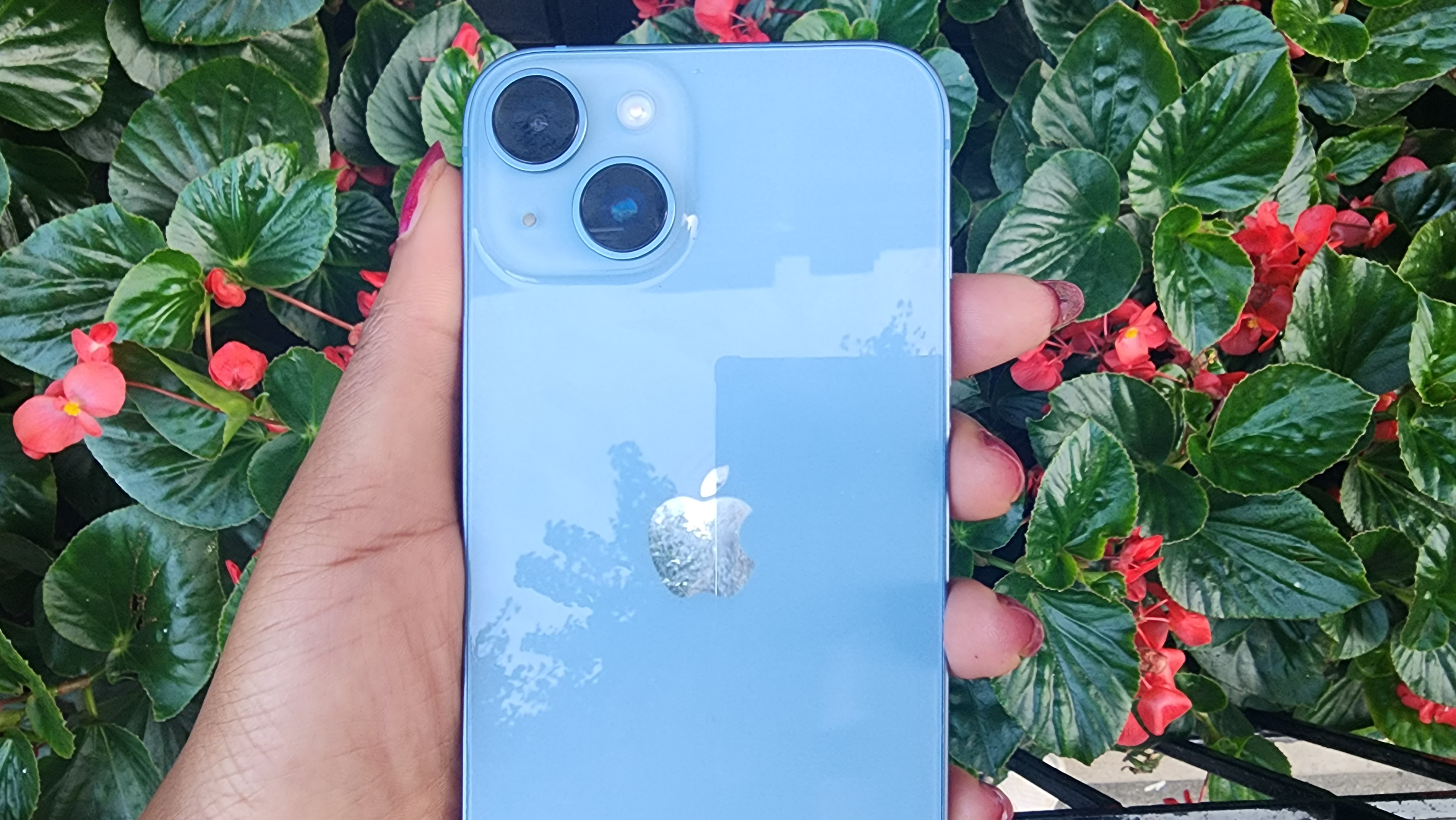iPhone 14 vs iPhone 13: Is it worth the upgrade?
Is the iPhone 14 actually better than the iPhone 13?

The iPhone 14 is here, but is it actually any better than the iPhone 13? It's a fair question, given the differences between this and the iPhone 14 Pro are huge.
Last year we saw the iPhone 13 Pro create some additional separation with its 120Hz ProMotion display, but the differences always used to be more finite: focussing on elements like camera capabilities while keeping some core specs the same.
This time around, Apple has widened the gap and made the choice of iPhone 14 vs. iPhone 14 Pro much clearer by hampering any real progress for the iPhone 14. That’s not to say it's a bad phone, but when we compare it to the iPhone 13, which is also remaining available in Apple's phone lineup, it could be worth saving some money.
| Spec | iPhone 14 | iPhone 13 |
| Screen size | 6.1 inches | 6.1 inches |
| Refresh rate | 60Hz | 60Hz |
| Storage | 128GB, 256GB, 512GB | 128GB, 256GB, 512GB |
| CPU | A15 Bionic (found in iPhone 13 Pro) | A15 Bionic |
| RAM | 6GB | 4GB |
| Rear cameras | Dual 12MP cameras (wide and ultra-wide) | Dual 12MP cameras (wide and ultra-wide) |
| Front-facing cameras | 12MP TrueDepth camera f/1.9 aperture | 12MP TrueDepth camera f/2.2 aperture |
iPhone 14 vs. iPhone 13: Price
The price remains the same with the iPhone 14 starting at $799 (RIP $699 iPhone mini), which falls in line with the expectations set by the rumor mill. Meanwhile, the larger iPhone 14 Plus comes in at $100 more with prices beginning at $899.
Frustratingly, the iPhone 14 has had quite the price bump in the UK and EU — jumping by £70 and €100 respectively. Regardless, you can now pre-order the iPhone 14 and iPhone 14 Plus from Apple.com, with the standard 14 out now and the Plus dropping on October 7.
For more, check out the best iPhone 14 deals.
iPhone 14 vs. iPhone 13: Design

Whereas the iPhone 14 Pro and Pro Max benefit from some design tweaks, the standard 14 gives you more of the same. That means an identical display notch to previous generations, very similar dimensions, and that same diagonal camera array layout on the bump.
Sign up to receive The Snapshot, a free special dispatch from Laptop Mag, in your inbox.
Of course, one big difference (literally) is in the form of a larger iPhone 14 Plus model, which replaces the iPhone mini and provides a big screen mid-range alternative to the Pro Max.
So, it’s a case of “if it ain’t broke, don’t fix it” for the aesthetics of the iPhone 14, but after two generations of the same look, we would have hoped for at least some updates — maybe the "pill-and-hole" design of the Pro to freshen things up a little.
Dimensions are mostly identical too, with the iPhone 14 measuring in at 5.78 x 2.82 x 0.31 inches with a weight of 6.07 ounces — same size but slightly lighter than the outgoing iPhone 13 (6.10 ounces), which means it should fit into your current case.
Obviously, the Max is larger at 6.33 x 3.07 x 0.31 inches, and is heavier too at 7.16 ounces.
iPhone 14 vs. iPhone 13: Display

Sticking rigidly to its guns, Apple is keeping the same 6.1-inch Super Retina XDR display that you saw in the iPhone 13 — with 1,200-nit peak brightness, HDR, a wide color gamut, Haptic Touch, and the same 60Hz refresh rate.
I get that thanks to the touch sampling rate and smoothness of the iOS graphical interface, this is the smoothest feeling 60Hz out there, but with the industry hitting 120Hz in phones far cheaper than this, this is getting beyond excusable.
Of course, the new entity is the iPhone 14 Plus, which comes with a 6.7-inch display — the same as the Pro Max iPhone, but with that same slower refresh rate.
iPhone 14 vs. iPhone 13: Processor

The chipset has been a controversial talking point for a while now, as rumors had circulated that Apple was going to stay the course with its pre-existing A15 Bionic chipset, while the Pro benefitted from the cutting edge A16 Bionic.
It turns out the rumors were pretty much true, making this the first year that new iPhone models are going to have different internals. Being honest, I’ve got mixed feelings about this.
As you’ve seen over the past year in the likes of our iPhone 13 review, the A15 Bionic is a monster of a smartphone chip — packing impressive power, graphical capabilities, and strong power management.
Plus, this is the version of the chip you’ll find in the iPhone 13 Pro, meaning you get an additional GPU core and up to 25% better graphics performance.
But if the iPhone 14 Pro's A16 Bionic Geekbench results are anything to go by, the differences will be minor in real-world use.
iPhone 14 vs. iPhone 13: Cameras

The camera setup remains largely identical across the iPhone 14 and iPhone 13: dual 12MP sensors with a standard wide and ultra-wide lens. Same sensor shift technology on the main, and the same 100% focus pixels to get nice, crisp shots.
There are a couple of key differences though, which come down to some small hardware tweaks and improved software photography. First, the main camera sensor sports smaller 1.9-micron pixels and an f/1.5 aperture — the same as the iPhone 13 Pro. Translation: better detail and low light performance.
Second, the 12MP selfie camera has been updated with an f/1.9 aperture (same again as the iPhone 13 Pro), which allows for better low light photography.

And third, Apple is bringing over the Photonic engine tech that you saw in the iPhone 14 Pro, which puts the Deep Fusion process earlier in the software's work when taking a picture for up to 2.5x better low light performance.
I would have liked to see some development in this area, like the higher megapixel count of the 14 Pro. As I said up top, however, Apple is keen to rely on that muted response to upgrade you to the iPhone 14 Pro and Pro Max.
However, as is clear from our reviews, the camera system Apple has created is stellar, paired with some impressive software photography to produce great shots in most circumstances.
iPhone 14 vs. iPhone 13: Battery life
The increases in use time touted in the event correlate with a small-but-welcome upgrade to the battery capacity — going up from 3,240mAh to 3,279mAh.
Of course, with the larger 14 Plus comes a far larger battery than that, with an up to 25% increase in longevity over the iPhone 13.
Right now, there is a teardown video of the iPhone 14 Pro Max, which shows the battery in it has actually reduced slightly in size, but we'll have to wait to see the inside of the standard iPhone 14.
Outlook
This year, more than ever, the latest iPhone is a tough sell when you compare the specs. Because sure, there are some small iterative updates, but the list of similarities has grown quite considerably with a similar CPU being in the mix.
The word “inflation” comes to mind when you start to ask why this is the case, but you can’t help but have a bad taste in your mouth for what is essentially a reskinned iPhone 13 with some super minor improvements.
Whether its worth it is entirely up to you and where you are based. iPhone fans in the US will find plenty to like — the tweaks look set to improve the cameras while providing the same blistering performance. Readers in the UK and EU, however, may feel different, thanks to that price bump.

Jason brought a decade of tech and gaming journalism experience to his role as a writer at Laptop Mag, and he is now the Managing Editor of Computing at Tom's Guide. He takes a particular interest in writing articles and creating videos about laptops, headphones and games. He has previously written for Kotaku, Stuff and BBC Science Focus. In his spare time, you'll find Jason looking for good dogs to pet or thinking about eating pizza if he isn't already.
